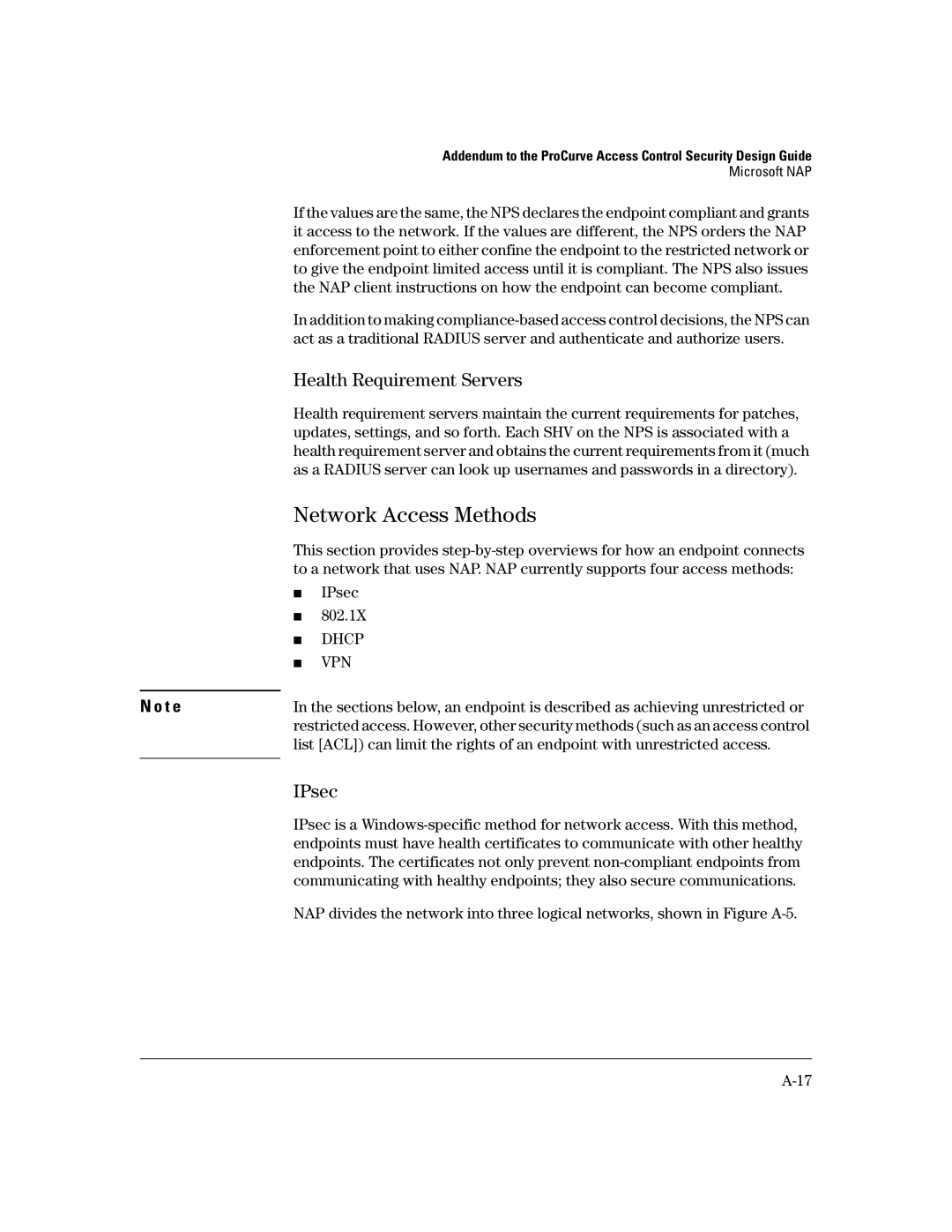Addendum to the ProCurve Access Control Security Design Guide
Microsoft NAP
If the values are the same, the NPS declares the endpoint compliant and grants it access to the network. If the values are different, the NPS orders the NAP enforcement point to either confine the endpoint to the restricted network or to give the endpoint limited access until it is compliant. The NPS also issues the NAP client instructions on how the endpoint can become compliant.
In addition to making
Health Requirement Servers
Health requirement servers maintain the current requirements for patches, updates, settings, and so forth. Each SHV on the NPS is associated with a health requirement server and obtains the current requirements from it (much as a RADIUS server can look up usernames and passwords in a directory).
Network Access Methods
This section provides
| ■ | IPsec |
| ■ | 802.1X |
| ■ | DHCP |
| ■ | VPN |
|
| |
N o t e | In the sections below, an endpoint is described as achieving unrestricted or | |
| restricted access. However, other security methods (such as an access control | |
| list [ACL]) can limit the rights of an endpoint with unrestricted access. | |
|
|
|
IPsec
IPsec is a
NAP divides the network into three logical networks, shown in Figure
